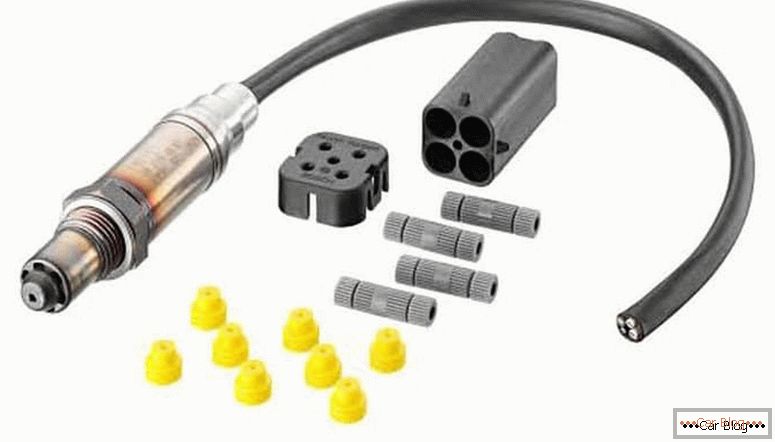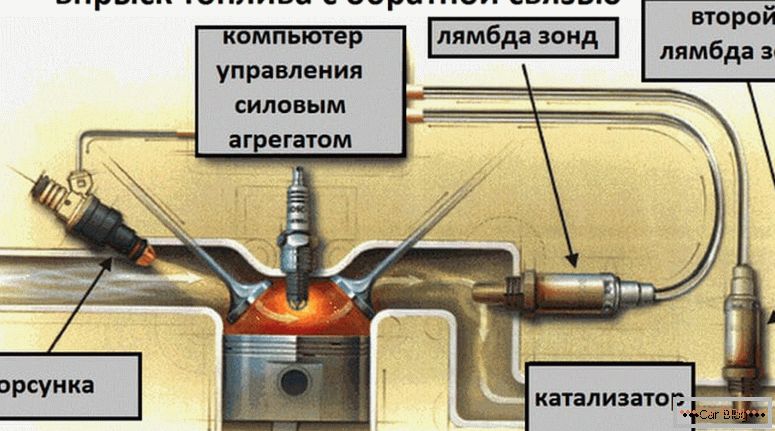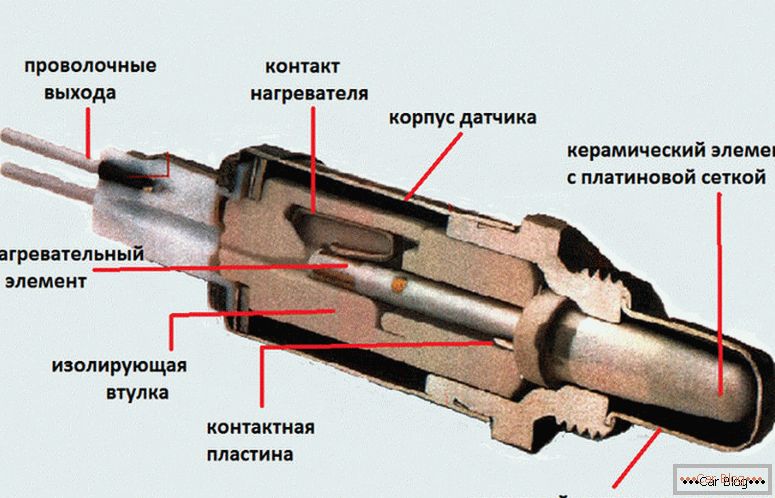Cars produced by progressive global companies are hard to imagine without all sorts of sensors and devices that read signals. Such an engineering approach ensures the smooth operation of all systems. Not the last place in the hierarchy of importance is the equipment controlling emissions. To understand his work, you need to know what a lambda probe is in a car.
Content
- 1 How is it functioning?
- 2 What is the lambda probe responsible for?
- 3 What is an oxygen sensor
How is it functioning?
In the specialized literature there are several different names for the same device. In particular, the lambda probe has more names-synonyms:
- oxygen sensor;
- oxygen sensor;
- lambda probe.
Чтобы понять, What is a lambda probe for?, стоит в первую очередь разобраться с тем, каким образом он работает. Основной задачей этого датчика является замер количества кислорода в выхлопных газах транспортного средства. Корректное измерение он может начинать после прогрева корпуса до оптимальных рабочих значений в 300–380C. In such a situation, the electrolyte inside the unit acquires the conductivity property.

Similar conditions, which also include the difference in the percentage volume of atmospheric oxygen and similar gas inside the exhaust pipe, provide the appearance of the output voltage at the built-in electrodes of the device. It should be borne in mind that at the stage of warming up and the start of a cold motor, the calculation of the injected fuel is not consistent with the data received by the electronic control unit from the oxygen sensor. The computer system is based only on the readings of such parameters:
- crankshaft revolutions per minute;
- throttle position;
- coolant temperature value.
To increase the sensitivity of the built-in oxygen sensor in conditions of low ambient temperature and after starting a cold motor, forced heating is used. Ceramic sensor in its design has a heating element, which has a connection to the automotive electrical network.
За что отвечает лямбда-зонд
The main tasks of the sensor include maintaining the optimal proportional composition of the air-fuel mixture used for the operation of the engine. The most acceptable is considered to be a composition in which 14.5–14.8 parts of air per one part of fuel sprayed by nozzles. Such accuracy can be obtained only in the case of operating a power supply system with electronic injection and a lambda probe built into the network.
Monitoring of excess air in the composition is carried out in a very original way. For this purpose, residual oxygen is measured in exhaust exhaust gases. This fact forced designers to mount the sensor in the exhaust manifold directly in front of the catalyst.
The sent signal to the ECU is decoded, and on its basis the computer makes a decision on the built-in algorithms to adjust the composition of the air mixture. To do this, the flow of fuel is intended to be sent to cylinders.
See also: What is the ECU in the car, where is
In certain cases, at the exit of the catalyst, engineers provide an embedded second lambda probe. This approach provides more accuracy in the preparation of the air mixture. Also, the catalyst efficiency monitoring function is fully operational.
Two types of sensors are provided:
- broadband type - relevant as an input tool;
- two-point - has the ability to install both at the inlet and at the outlet of the catalyst.
Attention! The principle of operation of two-point copies implies oxygen measurements in the exhaust gases and the atmosphere.
What is an oxygen sensor
Visually, the lambda probe looks like an ordinary car candle, which has lost its ceramic insulator. The cylinder body is threaded for screwing into the exhaust system. In the upper part of the output from one to four wires, depending on the model of the device.

The interior contains the following elements:
- a hollow chamber, inside which is atmospheric air;
- a galvanic cell comprising a ceramic part and a solid electrolytic composition;
- by spraying a platinum layer on the two sides of the galvanic cell;
- built-in contacts with the main and ground wire.
For modern sensors, a mandatory element is the built-in heater in contact with the automotive power grid.
The principle of operation of a lambda probe with elements of titanium is significantly similar to the work of thermistors. Requests from the electronic control unit are sent to the sensor in the amount of several pieces per second. In parallel, there is a fixation of answers in the form of a measurement of resistance. Based on the data obtained, a change is made to form the air-fuel mixture.



